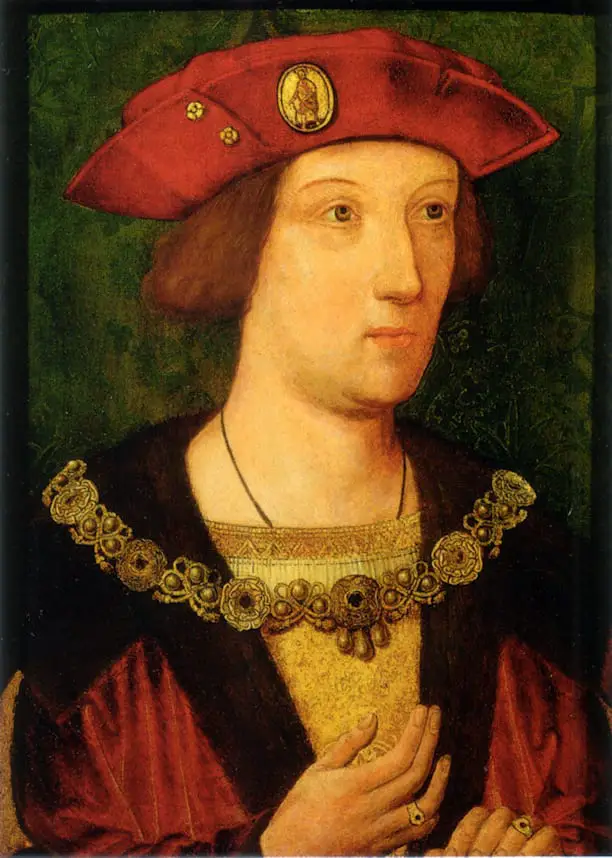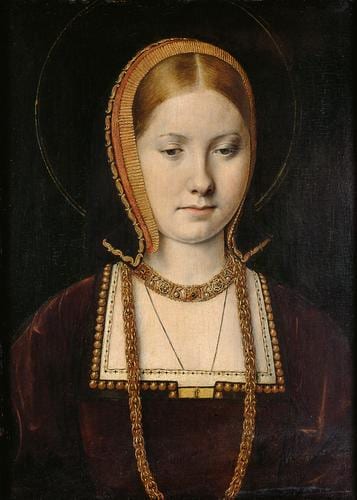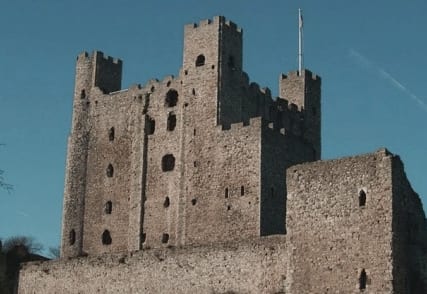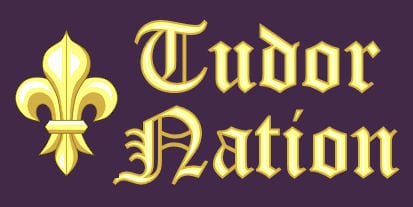Early Life
Arthur Tudor was born to Henry VII and Elizabeth of York at St Swithun’s Priory, Winchester, on 20th September 1486. Arthur was named after the legendary King Arthur to reinforce the lineage of the new Tudor dynasty. He was also created Duke of Cornwall on the day he was born.

The Bishop of Worcester baptised the young prince on 24th September at Winchester Cathedral. His god parents were: John de Vere, 13th Earl of Oxford; Thomas Stanley, 1st Earl of Derby; William FitzAlan, 16th Earl of Arundel; Elizabeth Woodville and Cecily of York.
Prince Arthur began his education at the age of 5 years. John Rede, the former head of Winchester College was his first tutor. Later, he was educated by Thomas Linacre a Humanist scholar and physician. Arthur studied ethics, grammar, history and poetry. He was also able to read and write in Greek and Latin as well as being an excellent archer.
Alliance with Spain
In March 1489 the Treaty of Medina del Campo agreed terms for the marriage of Arthur to Catherine of Aragon, the youngest daughter of Ferdinand and Isabella of Spain. Arthur was created Prince of Wales and Earl of Chester on 29th November 1489. His formal investiture as Prince of Wales took place on 27th February 1490 at the Palace of Westminster. In 1491 he became a Knight of the Garter.
In 1497 an amendment to the Treaty of Medina del Campo set out the details for the marriage of Catherine of Aragon to Prince Arthur. Catherine was to come to England when Arthur reached the age of 14 years. Her dowry of 200,000 crowns would be paid in three instalments, half within ten days of the marriage and the remainder paid in two equal instalments over the next two years. Catherine would retain her rights of succession to Castile and Aragon.
Marriage to Catherine of Aragon

Arthur’s bride arrived in England in October 1501. Impatient to see her, Arthur and his father, Henry VII, rode to intercept her entourage on the road to London. Arthur and Henry met Catherine on the evening of 4th November. Arthur was relieved to see that his bride was pretty with blue/grey eyes and long red/gold hair. She was about six inches (15 cm) taller than Arthur. After supper Catherine showed Arthur a Spanish dance while he showed her an English dance.
On 14th November 1501 at the age of fifteen, Prince Arthur married sixteen year old Catherine of Aragon in St Paul’s Cathedral. The Archbishop of Canterbury, Henry Deane, conducted the ceremony, assisted by William Warham, Bishop of London.
Arthur wore a suit of white satin while Catherine wore a white dress in the Spanish style with bell sleeves and a pleated skirt over a farthingale. She wore a headdress of white silk edged with gold and set with pearls and precious stones. Catherine was ‘given away’ by Prince Henry.
The couple took their vows on a raised platform six feet high which ran the length of the nave. After the ceremony wine ran freely in the streets and the bells of London rang out. A wedding banquet was held at Baynard’s Castle and afterwards there was music and dancing. The couple were publicly put to bed and their bed was blessed by the Archbishop of Canterbury and the Bishop of London.
The following morning Arthur boasted “I come out glad this morning for I have been, during the night, six miles into Spain”. The wedding celebrations continued for two weeks and included jousts, banquets, pageants, disguising and dancing.
Ludlow Castle

On 21st December Arthur and Catherine travelled to Ludlow Castle in the Welsh Marches where they were to form their own court. Catherine travelled by litter wrapped in furs while the rest of the party travelled on horseback. They reached Ludlow early in January and set about making the castle warm and hospitable. The Welsh magnates visited and Rhys ap Thomas placed both himself and his son at their service. Gruffydd ap Rhys, a Welsh nobleman, was appointed Catherine’s gentleman usher.
At the end of March 1502 both Arthur and Catherine were taken ill with a viral infection. The illness may have been plague or sweating sickness.
Death
Arthur Tudor died on 2nd April Arthur 1502. Messengers were immediately, dispatched to London to inform the King.
Members of the English nobility came to Ludlow to view Arthur’s body. On 23rd April a funeral service was held at the parish church of Bewdley. The earl of Surrey was chief mourner and represented the King. Many nobles of England and members of Arthur’s household attended the service. Catherine, as royal tradition dictated, did not attend the funeral service.
After the service Arthur’s body was taken in procession to Worcester for burial. Gruffydd ap Rhys rode ahead of the black-draped hearse. His horse was draped with black cloth bearing the Prince’s emblem reversed. The Prince’s former chamberlains, Sir William Udell and Sir Richard Crofts, broke their staves of office and threw them onto the coffin as it was lowered into its own chantry in the Abbey of St Wulfstan in Worcester.
Published 2017 – Updated – Nov 16 2024
Harvard Reference for this page:
Heather Y Wheeler. (2017 – 2025). Arthur Tudor 1486 – 1502 Available: https://www.tudornation.com/arthur-tudor-1486-1502 Last accessed June 24th, 2025
